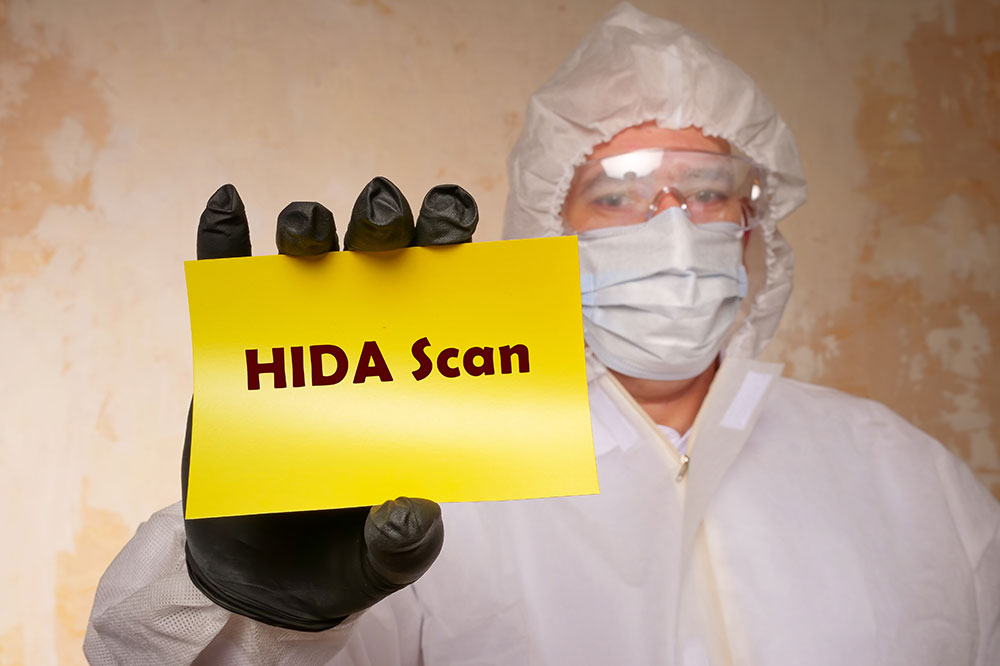
HIDA scan – Procedure, scan results, and costs
A hepatobiliary iminodiacetic acid or HIDA scan is diagnostic test doctors recommend, usually when identifying an issue with the liver, gallbladder, bile ducts, or small intestine. In professional terms, it is commonly known as cholescintigraphy or hepatobiliary scintigraphy. Today, we will discuss the HIDA scan and all the information you must know before moving forward with the scan. This will help you or your loved ones confidently prepare for the scan.
What is a HIDA scan?
The gallbladder stores bile, which breaks down fat and eases up digestion. The HIDA scan or hepatobiliary scintigraphy is used to check the functioning of your gallbladder and the liver. It helps in checking the movement of bile in the gallbladder. The HIDA scan is useful in the early or timely detection of severe gallbladder diseases like gallstones and bile leakage.
A HIDA scan can be of immense help, especially for people struggling with problematic symptoms in the gallbladder or liver. If you get a HIDA scan, you can detect the following diseases.
- Gallstones
Gallstones can develop if there is excess cholesterol or bilirubin in your blood. They can also occur when there is a lack of bile salts in your gallbladder. - Bike leakage
This can happen after gallbladder surgery. - Cholecystitis
This happens when your gallbladder is inflamed. - Blocked bile ducts
The blockage can happen due to cysts, lymph nodes, or tumors in your gallbladder. - Congenital bile duct defects
This is a disease a person is affected with from birth.
What is the procedure for the HIDA scan?
The HIDA scan can be easily done in one to four hours. However, in case of additional imaging, you might need to return after 24 hours of the first scan. The procedure for the HIDA scan is done in the following steps-
- A radioactive tracer is to be ejected into the vein of the patient’s arms.
- That tracer or special camera will trace the path of the bile.
- A gamma camera is kept over your belly or abdomen to take pictures of the tracer.
- A nuclear scanner will detect if there are any problems in its movement and take certain images along the way.
- The tracer will flow from your liver to your gall bladder and then to your small intestine.
- Once the test is done, the tracer will lose its reactivity on its own and pass through your urine or stool in one or two days.
What precautions do doctors advise in the test?
The HIDA scan takes less time to conduct, but there are a few precautions that the doctor might advise you to keep in mind before, during, and after getting the test. Some of them are-
- The patient is usually asked to fast for at least four hours before their HIDA scan. However, you can drink clear liquids.
- Imaging rooms are usually cold. Therefore, the patient is advised to wear warm and comfortable clothes.
- The patient should lie down still to prevent blurry images.
- After the test, the patient is advised to drink lots of fluids to help the radioactive tracer flush out.
How to read the HIDA scan results?
The HIDA scan can help your doctor read and understand the signs and symptoms of gallbladder disease. The result of the HIDA scan can be as follows:
- Normal result
This denotes no problems with your gallbladder as the tracer moves seamlessly into your gallbladder and small intestine. - Blockage or obstruction
If the tracer moves slowly in your gallbladder, it means that there is some blockage or obstruction in the liver. - Acute inflammation
When the radioactive tracer is not visible, it denotes acute inflammation or acute cholecystitis. - Chronic inflammation
The results will show chronic inflammation when the amount of tracer leaving your gallbladder is very low. - Leak
If the radioactive tracer is found anywhere else out of your binary system, it might indicate a leak in the gallbladder.
The HIDA scan is otherwise a safe test, and there are not many risks involved. However, the patient might be vulnerable to radiation exposure while the scan is conducted on them. Allergic reaction is also possible due to the prescription treatments used during the scan.
What is the cost of a HIDA scan?
The average cost of a HIDA scan is around $1120. However, these prices may vary according to the intensity or variations in the scan. Furthermore, the prices may differ in individual diagnostic centers. Therefore, compare and confirm with multiple centers before finalizing the actual price for the test.
The HIDA scan has become one of the most reliable and successful means to check gallbladder diseases like gallstones or blocked bile ducts. Doctors ensure it is completely painless, and the patient can confidently move forward with the test. It promotes early detection of these diseases and thus helps doctors begin with the timely treatment of severe diseases.




